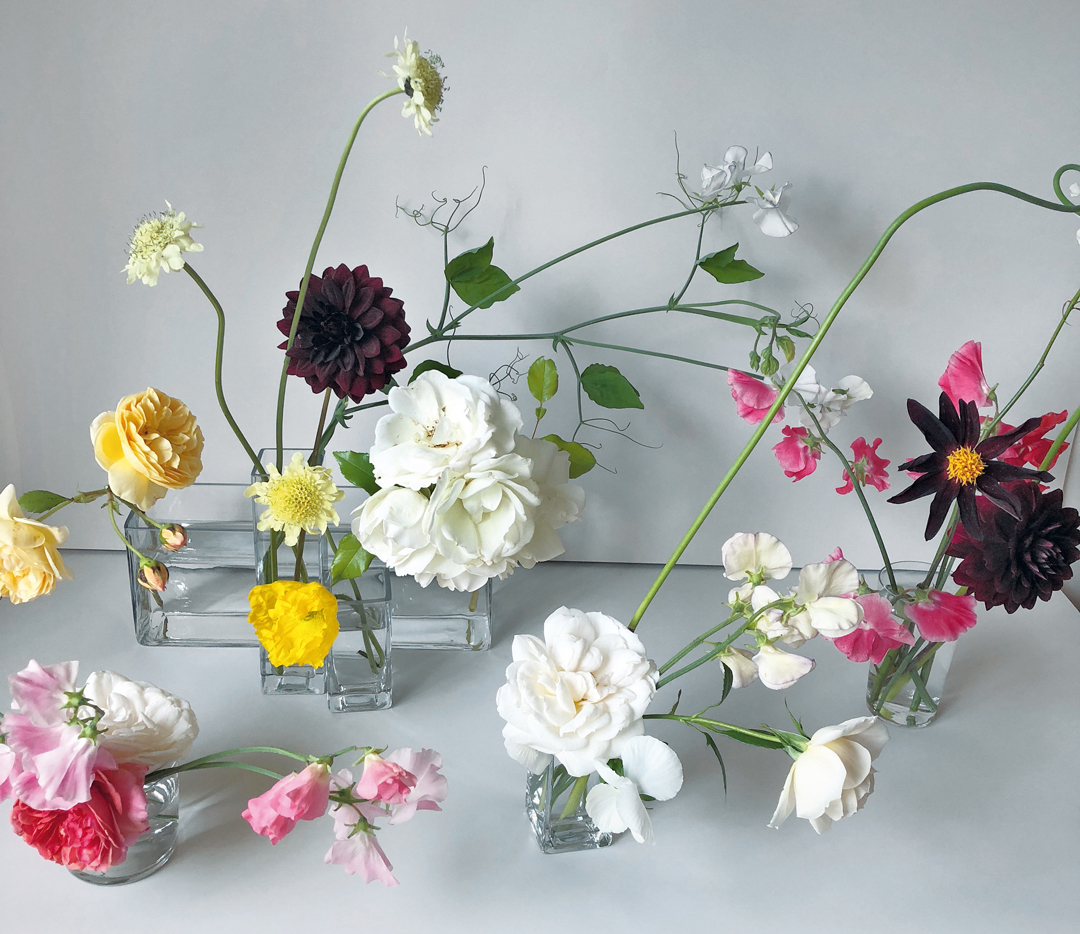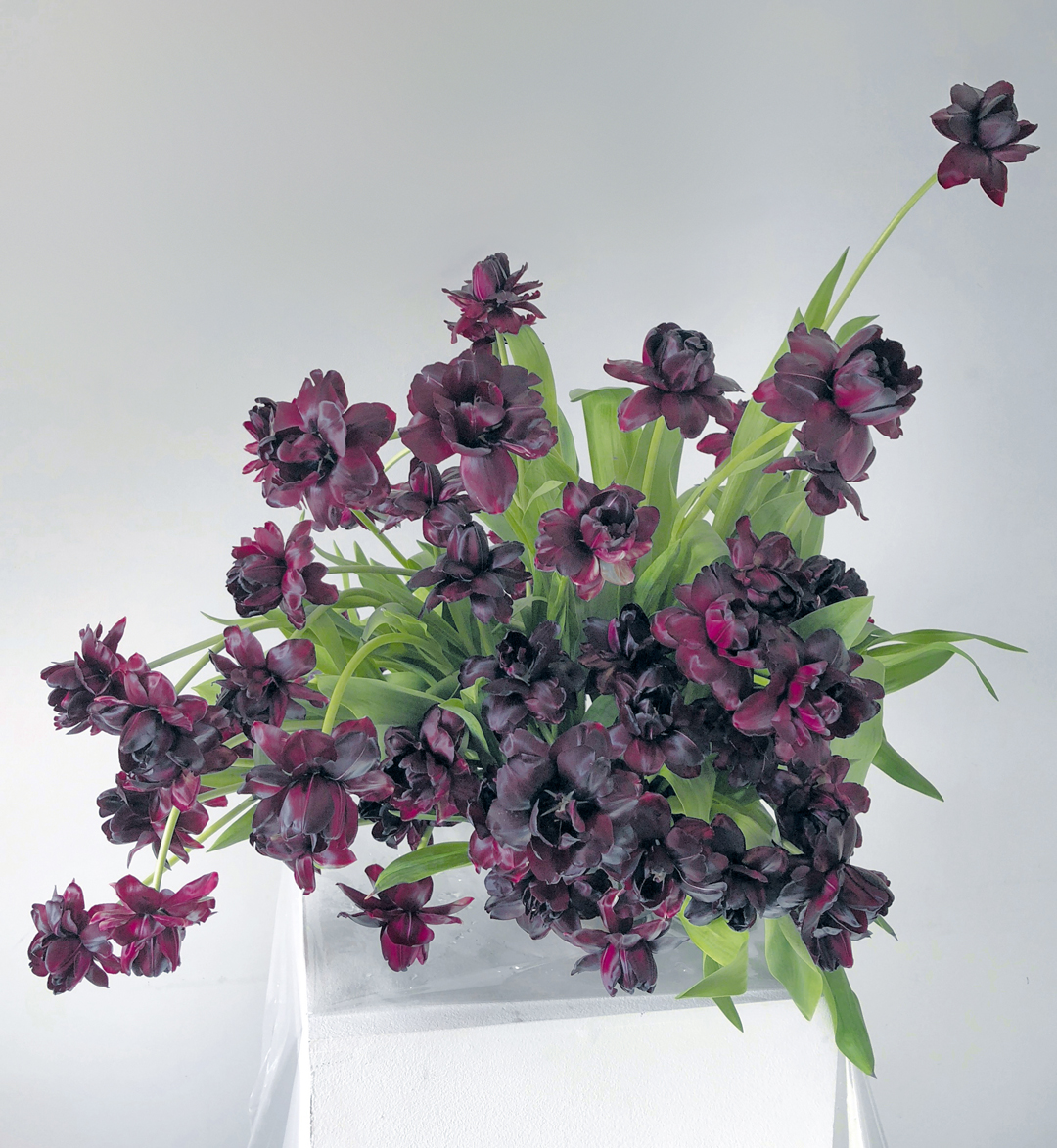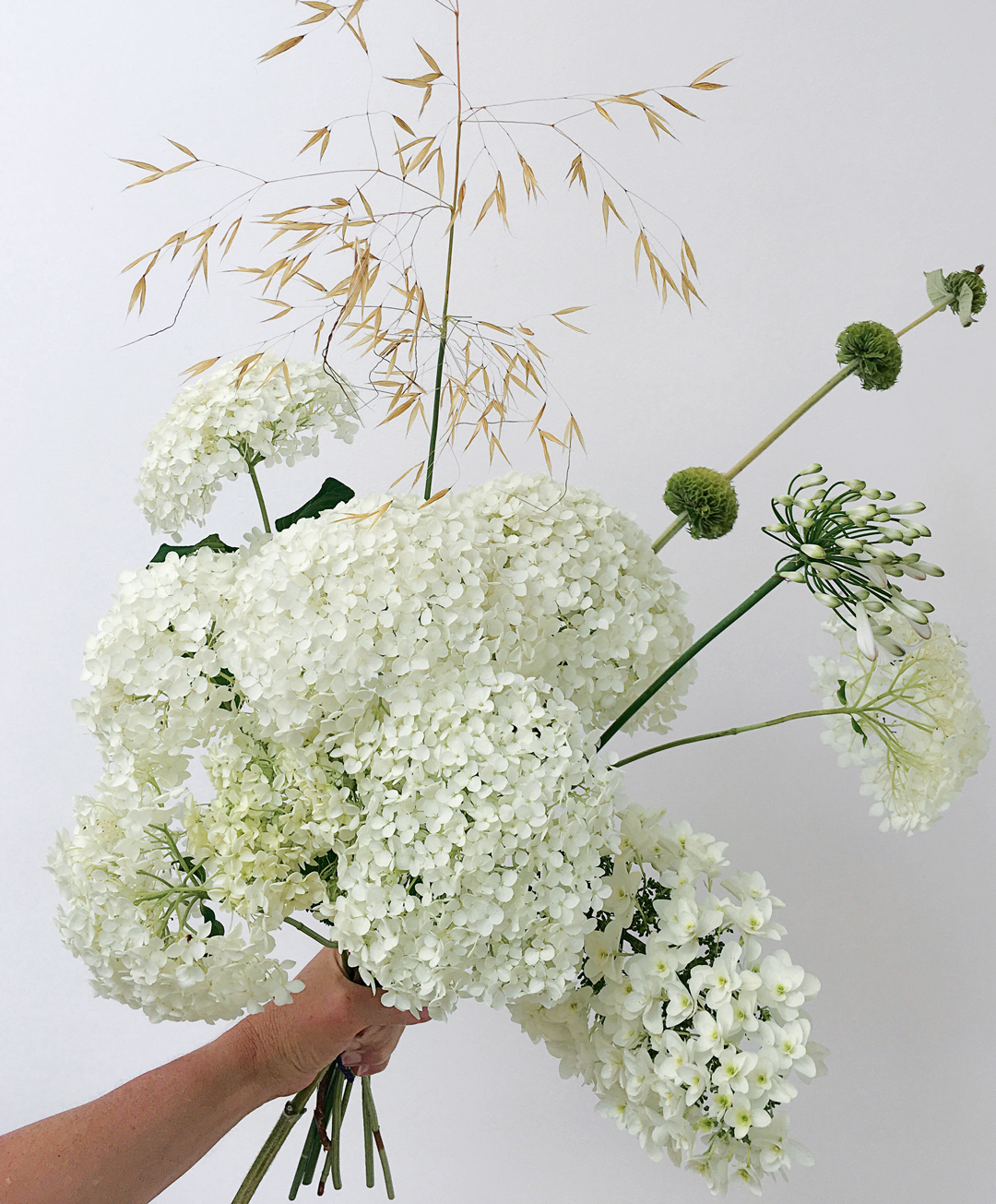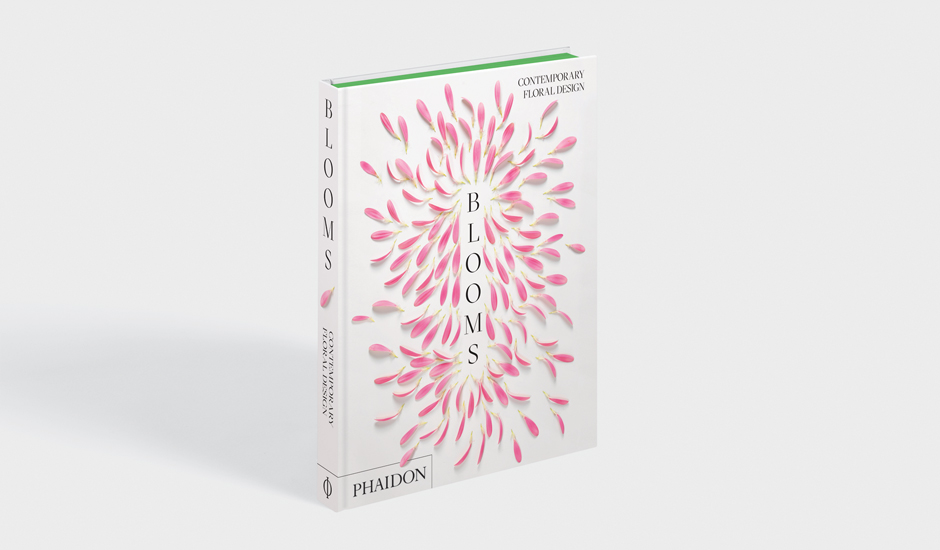
Bold Oxlip - Not your Grandmother's Florist
Sugary cottage gardens and Christopher’s Lloyd’s Great Dixter are a few of the things that inspire Harriet Slaughter
Harriet Slaughter’s arrangements for her company Bold Oxlip often subvert preconceptions, creating something bold and strong using soft, sugary hues normally associated with more delicate arrangements. Trained as a ceramicist, she also takes great interest in vessels, often using her own designs, and she acknowledges the extra dimension that an unusual vase or offbeat presentation offers.
She characterises her style as "a sense of undoneness, but with composure," and looks upon floristry as essentially more curating than design." This pared-back approach demands interesting blooms, and so she has started growing her own varieties on a small plot in south London. "Some of the tulips I grow have these lovely soft, velvety stems, which you just don’t see on commercially grown flowers," she says.
She's featured in our new book Blooms: Contemporary Floral Design alongside 85 other floral artists. In it you'll find established florists alongside rising new talent – each nominated by industry experts. It's an expertly curated, gorgeously produced collection of work that offers insight into the profound effect that floristry has on today's visual culture. We asked Harriet a few questions about what she does and how and why she does it.

How would you describe what you do and do you have a signature style? This is always the hardest thing to pinpoint. Fundamentally, I am, and always have been, in love with plants and flowers. In my floristry I want to showcase their natural beauty - I feel there is no need to gild the lily so to speak. But in a wider context I suppose I want to share my enthusiasm for the subject of flora as a whole with others. Contemporary, garden-inspired flowers is the way we describe our style but I don’t know if that’s quite right. Perhaps a sense of undone-ness but with composure is a nice way to look at it.
How did you get here? My dad’s a gardener, he spends every day in the garden and I learnt so much about plants from him. He always allowed me to cut freely from his herbaceous borders (still does!) and I would arrange simple vases with these finds. I guess this meant I’ve always been quite aware of the seasonality of British flowers which has hugely affected my floristry practice. When I got married, the florist who did our flowers was completely inspiring, and in a lovely turn of events I ended up working with her. I really liked the work and before I knew it, I had committed to working with flowers full-time.
What inspires you? First and foremost, the flowers themselves. Ultimately inspiration comes from all corners; front gardens in London, sugary cottage gardens, flowers growing in the wild, allotments, glasshouses, Christopher’s Lloyd’s Great Dixter, and many other British gardens like Rousham too. I once saw thousands of wild primroses growing on a mossy bank in Dorset and the image is imprinted on my mind.
What emotion do you want to evoke in people? Joy

Is how an arrangement smells important? Definitely. As I write this, we’re just coming into violet season in England. Their scent is just magical. I recently learnt from fellow flower grower and gardener James Horner, that in Victorian times they were grown in their thousands on small parcels of land called ‘Quillets’ in West Cornwall and the Isles of Scilly and were highly prized for their perfume. Sadly this practice no longer exists but we still get the earliest narcissi paperwhites from this part of the country. One of the most special flowers we receive into the studio are the scented garden roses from a grower in Hampshire, the variation in perfume - from the classic soapy fragrance to peachy, fruity varieties.
Amusingly though, some of the loveliest looking flowers don’t always have the best scent and of course, some of the most beautiful varieties have absolutely no scent at all.
Rather sadly, the natural perfume has been bred out of many of the imported roses you find in the supermarkets, as it is part of the decaying process and lengthens their life. It is great to have people who are passionate about growing flowers for fragrance in the UK.
How long can you spend on a particular arrangement and what’s the hard part to get right? Far too long is basically the answer. I am a perfectionist but I have to remind myself that flowers don’t really need our intervention to make them beautiful. The hardest part is actually selecting the flowers in the first place. That can be a bit of a kid in a sweet shop scenario.

What’s the commission you’re most proud of and why? I’ve been hugely privileged to work with some wonderful clients and fashion brands. However, the most special work can often be creating a bespoke bouquet for someone’s special someone to communicate a particular emotion or simply just to let them know they are loved. This is made all the more special when these flowers have come from my own cutting garden, there is nothing quite like arranging flowers you have grown yourself. I’m quite proud of our fledgling cutting garden.
See more of Harriet Slaughter's work here. Check out Blooms: Contemporary Floral Design and come back soon for another interview with one of the floral artists in it.